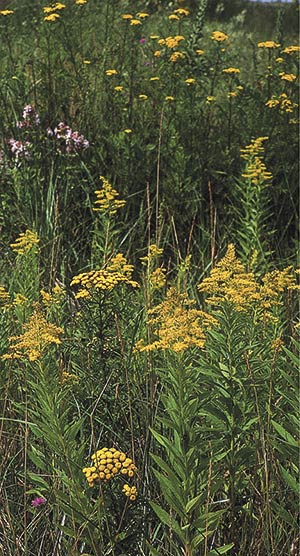
Do you ever travel for the pleasure of experiencing the exotic? To absorb a city’s regional feel, discover landscapes with unfamiliar hues and textures, or hike through natural areas where native plants in their native settings show you their unbound souls?
Then you probably appreciate diversity, too. You drive quickly away from your destination’s airport with its too-same hotels and restaurants. You’re thrilled to see cactus in a gravel mulch when you’re in the desert, disappointed to see bluegrass sod patched into prairie.
Chances are that you, like me, appreciate the plants you meet on your travels so much that you seek them out and add them to your garden.
“Invasive” becomes a watchword
It’s time to think about this. Not to stop collecting, necessarily, but to be more discriminating in what we plant. We’re in danger of homogenizing the natural world, with the same speed and dulling effect as fast food corporations expanding their territories.
I’m referring to invasive plants. Those plants the USDA considers for official weed status because they exhibit the ability outside of their native range to spread in ways that “threaten the survival or reproduction of native plants or animals or reduce biological diversity.” And I’m focusing on the ones deliberately introduced, not those inadvertently carried as cloth- or shoe-clinging seeds, discharged whole from a ship’s ballast tanks, or unwittingly planted as vegetative bits in root balls shipped between states.
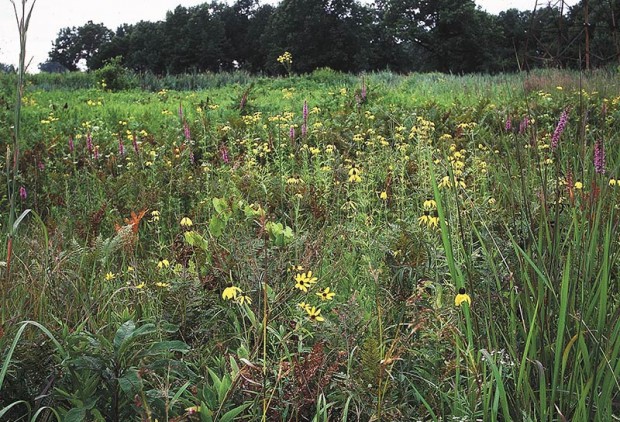
You already know a few of the worst
If you’re a lover of Michigan forests, you probably know Norway maple (Acer platanoides) is one of these deliberate introductions now seen as a big mistake. The species seeds prolifically into our woods, crowding out native saplings so that autumn hillsides once red maple scarlet in fall are muting to European yellow. They throw such long-season shade that they close the early spring window of sun our native wildflowers evolved to exploit, gradually killing the beauty at their feet. Even their roots are sinister, suspected of allelopathy, a plant kingdom domination ploy in which they exude chemicals that kill or stunt the growth of other species.
Those who find peace in walking our Great Lakes shores might picture baby’s breath (Gypsophila paniculata) in this role. Pretty in a garden, it’s a killer on the dunes, bullying and displacing bright orange hoary puccoon, dreamy off-white death camas and other natives.
Even those who don’t hike in but merely admire from a car window our extensive, water-purifying wetlands, know purple loosestrife (Lythrum salicaria) as this kind of cultivated criminal. Watch for just a few years as one tiny fluorescent pink patch expands to cover acres. Like the other alien invasives, loosestrife changes not only the plant community but the entire food chain that rests on its shoulders.
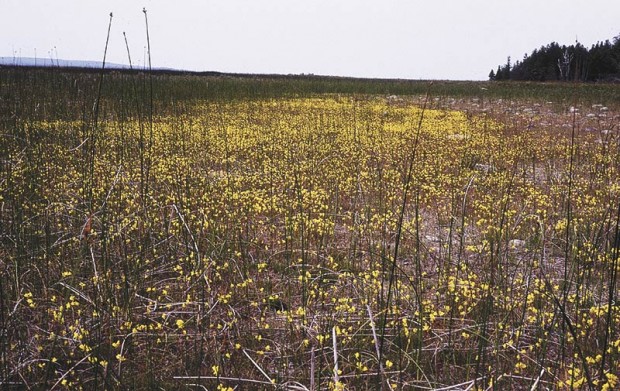
Continue excluding known criminals, or ask credentials of all?
Under the United States Department of Agriculture plant importation regulations, inspectors reject excluded species, using a “black list” of plants known to have become invasive to the point of widespread economic and environmental impact. Under “white list” policy, new species are excluded until proven innocent, and the burden of proof rests on the importer. A grower who wants to import a species for agriculture or horticulture must conduct and file for approval a risk assessment, which evaluates the plant’s potential to spread and the impact of such a spread on native species.
Can such a policy really stem the tide of homogenization? It’s debatable. Battles still have to be fought against invasives already here. Even if white listing had been in place and effectively enforced since the earliest days of U.S. independence, it still would have come too late to shut the door against groundcover myrtle (Vinca minor, currently endangering American forest ecosystems), privet shrub (Ligustrum sinense, crowding out prairie and woodland plants alike in many states), or the glossy buckthorn tree (Rhamnus cathartica, a serious threat to both dry and wet plant communities). And import restrictions might not have stopped the importation of kudzu (Pueraria lobata, the vine that’s engulfing the southeastern U.S.) because at that time its economic promise seemed greater than any foreseeable risk. And even today we probably couldn’t predict the latent ability of a meek creature like Grecian foxglove (Digitalis lanata) to explode into certain special niches as it has done into the prairie in one Kansas county.
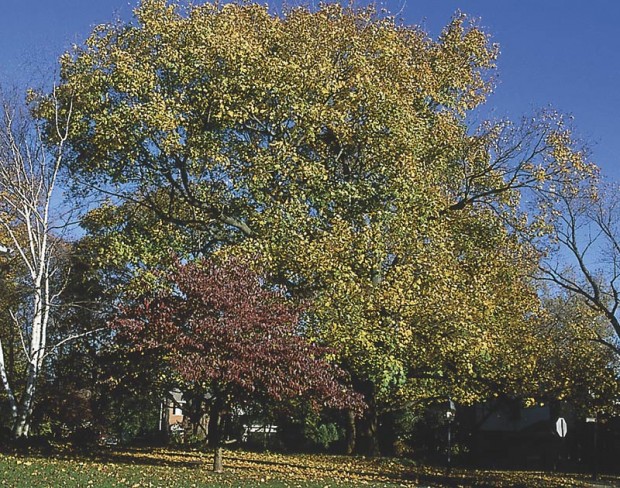
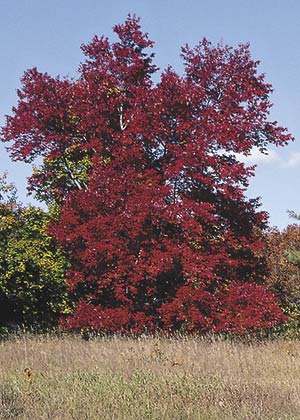
Might we control this at our garden level?
It’s a hot topic. A species that would run rampant if given free reign could be an acceptable team player in a controlled setting, like a private backyard garden. I’m among those who bridle at the thought of being told what I can and cannot plant, even though I greatly value and work to preserve our native species and systems. For financial reasons, many professional growers also balk at the idea of white listing. They know that what’s new, sells and what’s held up in testing becomes old quickly. Some also profit from the fact that what’s invasive, propagates quickly for sale. Who can predict whether people will voluntarily lean toward responsible stewardship of native diversity, as expected by some policy makers, or whether individualism, capitalism and the rising cost of controlling invasives will lead to a white list.
Happily, a few environmentally conscious commercial growers and botanical institutions have already begun doing pre-introduction assessment of new species. Some have evaluated and then decided not to introduce new species, or to issue them only with warnings. Certainly more of this will happen as awareness of the problem grows within the gardening community and buyers begin to question and reject the next gooseneck loosestrife (Lysimachia clethroides), spreading buttercup (Ranunculus repens) or Mexican bamboo (Polygonum cuspidatum) that comes along.
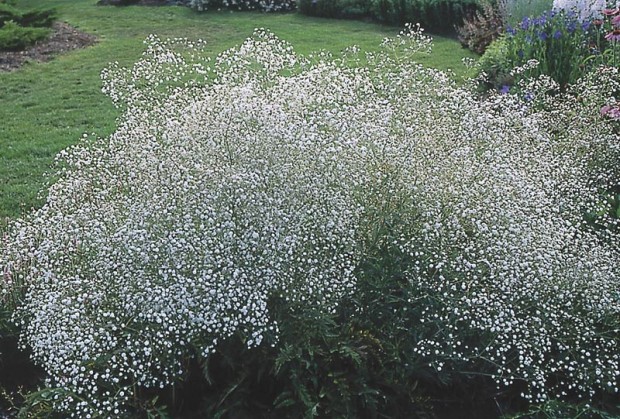
What you can do now
You and I may not be importing, introducing or selling new species, but the cumulative effect we have on their spread is mighty. The policy makers know this, and some feel that better enforcement and publicity may make white lists unnecessary.
So I hope that your awareness prompts you to think twice about buying plants from growers who act unethically. I refer to people best summed up by this exchange between myself and a world-renowned grower I will allow to remain anonymous for the time being:
Reporter: “I was alarmed at how quickly that plant spread, right out of the garden and even through mowed lawn.”
Grower, smiling rakishly, even proudly but certainly without any hint of remorse: “Yes, it is quite the thug, isn’t it?”
I hope for several things. That you will try to say “no” to species that prove themselves invasive in your garden, either by rigorously confining them or disposing of them in a final way. That you will question the urge to and consequences of deliberately planting surpluses from your own garden in nearby untended fields and woods. At the very least, I pray that you will think twice when someone offers you a plant that they “have too much of.”
Gardening is all about hope
Maybe our children will be able to enjoy the same kind of vacations that have delighted us, and walk with mouths agape in alpine meadows or tidal flats or cypress swamps full of plants they’ve never seen. Maybe they will also be able to proudly and accurately say to visiting gardeners “That carpet of trillium? Yes, it’s a Michigan native and we make sure it always will be.”
Article by Janet Macunovich and photos by Steven Nikkila, www.gardenatoz.com.
